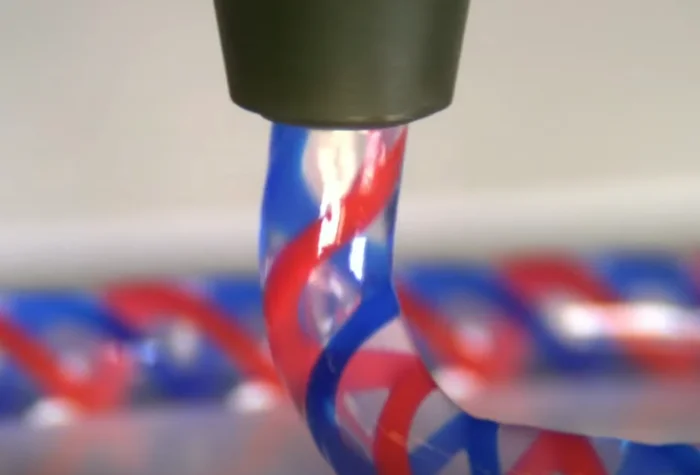
3D printing helical structures via rotational axes
A new study has introduced a new method for creating helical structures with subvoxel control using rotational multimaterial 3D printing (RM-3DP). The study shows how this technology can be used to fabricate functional artificial muscles and hierarchical lattices.
The field of 3D printing has made huge strides in recent years, and one of the most exciting areas of research is the ability to print complex, multi-material structures. A new study, titled "Rotational multimaterial printing of filaments with subvoxel control," takes this concept even further by developing a method for creating helical structures with subvoxel control.
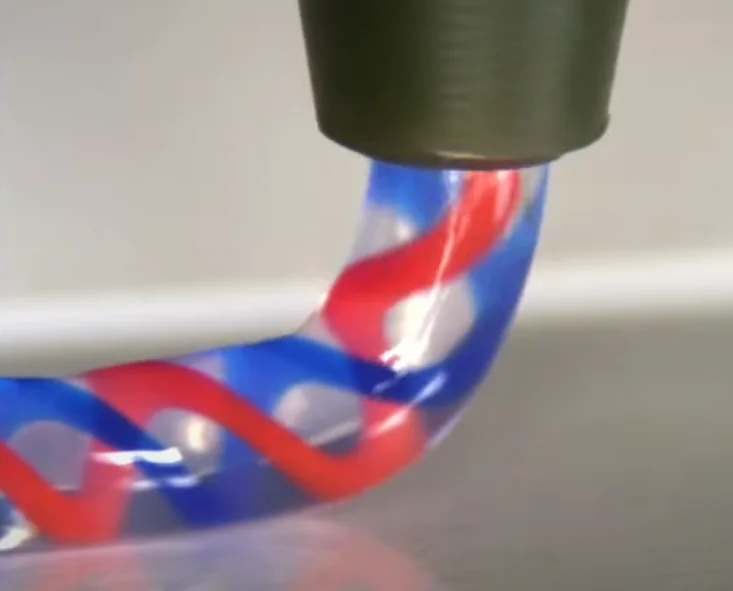
Helical structures are found throughout nature, and they have unique mechanical properties and multifunctionality. Until now, synthetic architectures that mimic these natural systems have been created by a variety of methods, including winding, twisting, braiding, microfluidics, and printing. However, these methods have been unable to create multimaterial, helically architected filaments with subvoxel control in arbitrary 2D and 3D motifs from a broad range of materials.
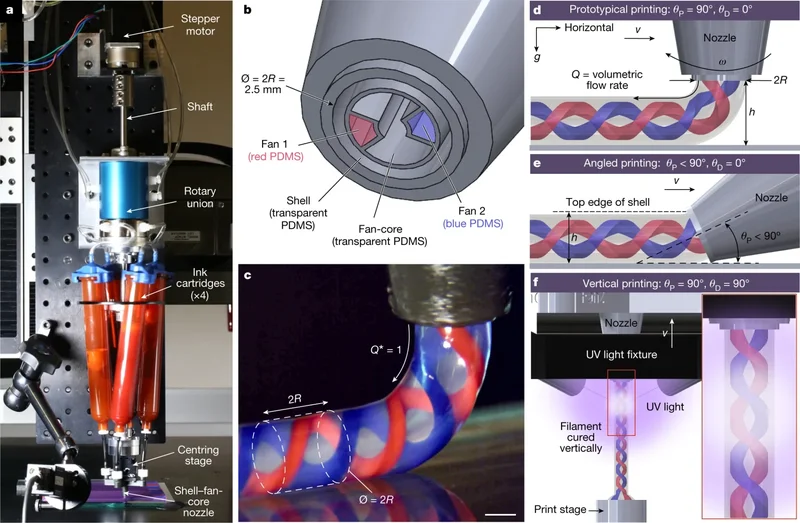
The study introduces a new method called "rotational multimaterial 3D printing" (RM-3DP) that allows for subvoxel control over the local orientation of azimuthally heterogeneous architected filaments. The method involves continuously rotating a multimaterial nozzle with a controlled ratio of angular-to-translational velocity. This results in the ability to create helical filaments with programmable helix angle, layer thickness, and interfacial area between several materials within a given cylindrical voxel.
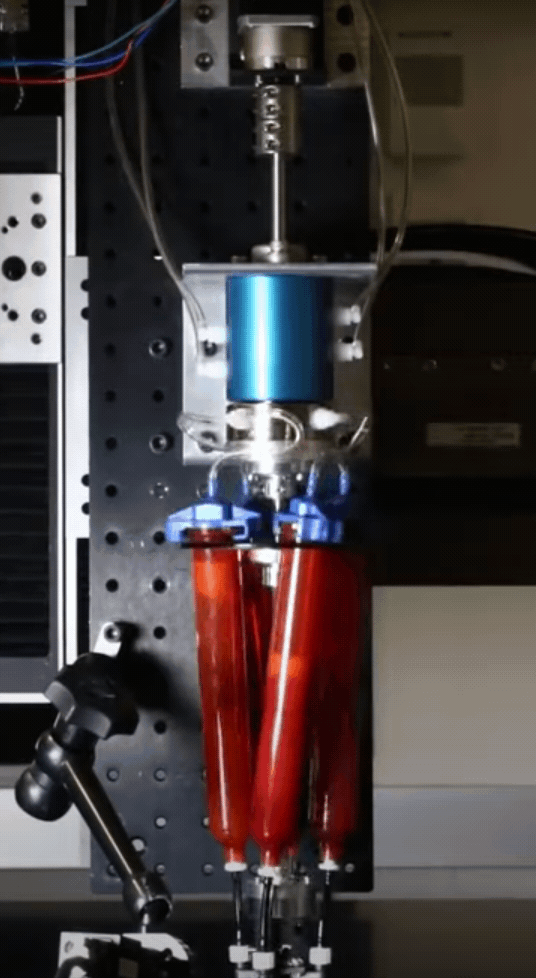
The researchers were able to use this method to fabricate functional artificial muscles composed of helical dielectric elastomer actuators with high fidelity, as well as hierarchical lattices comprising architected helical struts containing stiff springs within a compliant matrix. This breakthrough in 3D printing technology opens up new possibilities for creating multifunctional architected matter in bioinspired motifs.
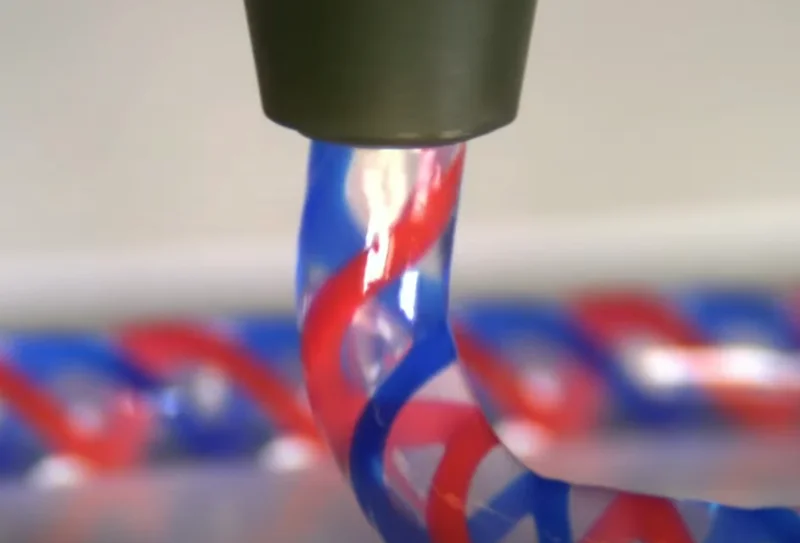
This study presents a new and exciting development in the field of 3D printing, using rotational multimaterial printing that allows for the creation of helical structures with subvoxel control. This technology opens up new opportunities for creating functional artificial muscles, hierarchical lattices and other bioinspired motifs in a wide range of materials. The potential applications for this technology are many, and it will be interesting to see how it develops in the future.

Add a Comment